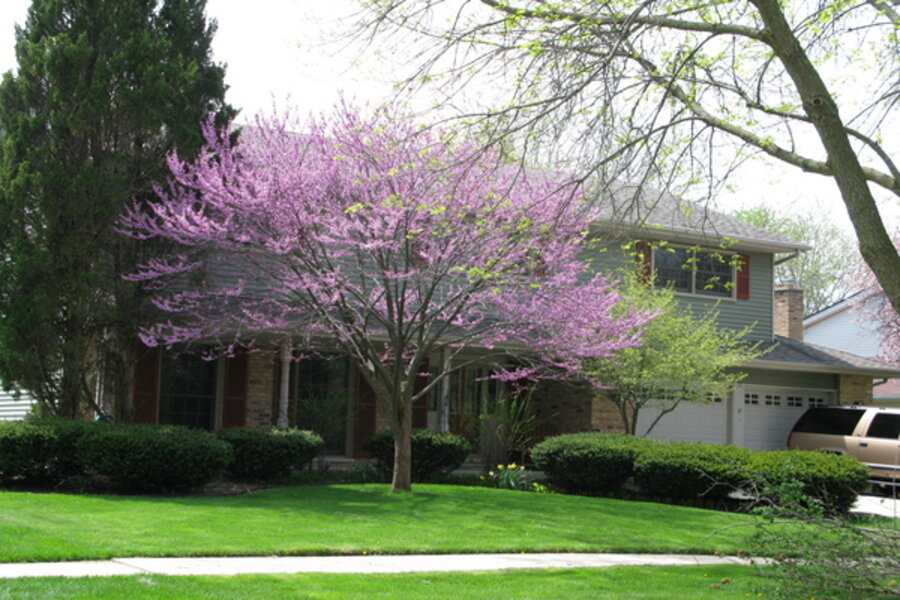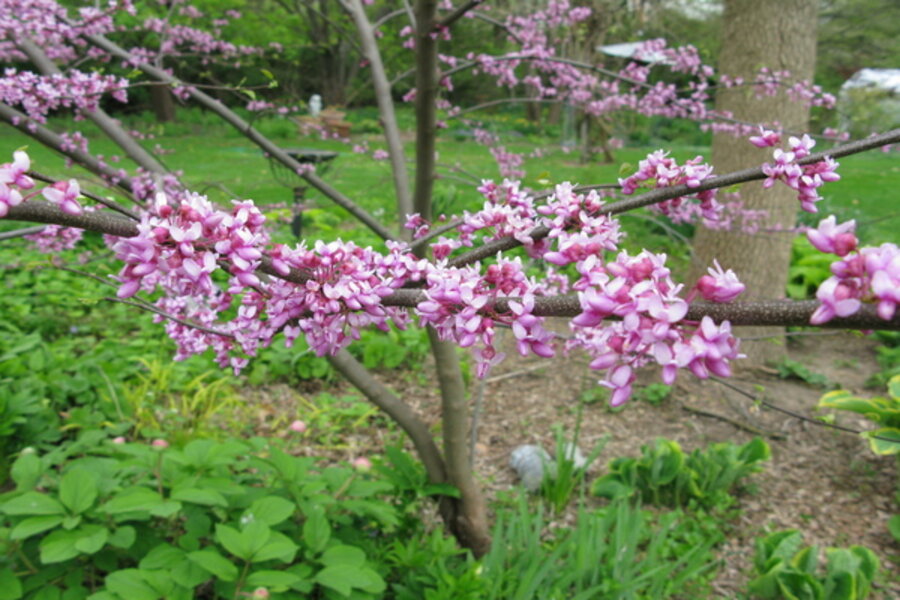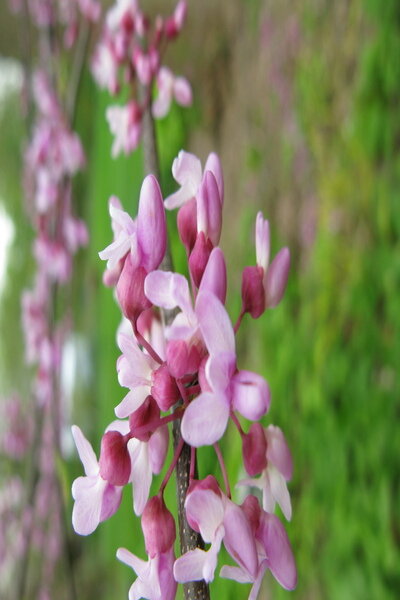Growing redbud trees and forcing redbud branches into bloom
Loading...
Thanks to the help of some unknown critter, this Midwest gardener has beautiful redbud branches to force into bloom to add color and fragrance to her home.
Now I fancy myself to be a pretty decent gardener. Sure, I have some losses here and there. But then, who doesn’t? Let’s face it. Plants die.
They die for various reasons – which may or may not be within our control. So, by itself, the lack of success in growing a certain plant isn’t an earth-shattering event ... unless you want one so badly that you could almost taste it!
And the one plant that I have lusted after since we first purchased our home, but the one plant that I have never – ever – under any circumstances, been able to grow, no matter how hard I tried, how many times, or how many different parts of my garden I planted it in, is the beautiful Eastern redbud (Cercis canadensis).
It's a tree every piece of literature rates as “easy to grow!” Here, my thumb is blacker than the blackest ace of spades.
That is, until now. But then, if truth be told, I wasn’t the gardener who, four years ago, planted this dapper dude in the wrong spot, way too close to the deck.
It was a bird …or maybe a squirrel. Whoever, or whatever it was, I thank it from the bottom of my heart.
But since it’s too close to the deck, impeding the easy flow of mowing grass, will I move it? Not on your life! Let my husband deal with the hardships of mowing; I – finally – have a healthy, thriving redbud.
Oh, I thought about relocating it initially when I first came upon the minuscule twig in the shade of the old green ash tree. But since redbuds form taproots and resent transplanting – and my success rate with this tree has been rather, well, abysmal – why challenge fate? I’ll leave well enough alone.
The beautiful and 'easy to grow' redbud
If you've ever seen a redbud in all of its magnificent, floriferous springtime glory, then you understand why I have been so passionate about this tree.
Its spring blooms dazzle like the brightest of lasers.The profusion of small, yet striking, sweet-pea-shaped, rose-purple-colored flowers (which are edible) pop directly from its twigs, branches, and trunk in early spring before the leaves appear.
But not all these harbingers of spring have rose-purple flowers – some don purple, lavender, pink or white ones.
One of the most popular native trees throughout much of the country, redbuds make wonderful lawn trees yet look equally handsome in groupings or naturalized at the edge of a woodland garden.
Redbuds are an understory tree, adapted to thrive under the canopy of larger trees in a wide range of soil conditions. They are, however, happiest when grown in moist, well-drained soil. Considered to be short-lived, they grow to a mature height of 20 to 30 feet, with a limb spread of 30 feet
Forcing redbud flowering branches is easy
One of the joys of having spring-blooming shrubs and trees, such as the redbud, in your garden is that they can be forced into bloom indoors.
And although my redbud is only six to seven feet tall, there are errant branches that should be pruned, happily giving me a good supply of branches to bring indoors for forcing. (Again, thank you, bird or squirrel!) Nothing could be easier.
Prune on a mild winter’s day when the temperature is above freezing. Then, branches and buds are softer and more pliable and will be able to handle the transition from outdoor to indoor temperatures much better.
Once indoors, use a sharp knife to cut a cross into the bottom inch of each stem to encourage water uptake. Submerge the cut branches in cold water in a utility sink or bathtub overnight.
Then place them in a bucket or vase containing warm water in a cool, bright spot away from direct sunlight. Too much heat or sunlight can cause buds to drop.
Change the water every other day to prevent bacteria buildup or, if you wish, add floral preservative to the water to promote hydration and retard bacterial growth, keeping the water clear for up to a week.
Soon buds will begin to swell and crack open, giving you the opportunity to show off your artistic talent for a stunning display of flowering branches.
However, when gathering branches for forcing, be careful not too take too many, for you need only a few branches for a gorgeous display that will give you weeks of pleasure while you await the beauty of Mother Nature’s springtime handiworks outside.
Give me a few of weeks, and I’ll show you the beauty of forced redbud branches.
-----
Betty Earl, the Intrepid Gardener, blogs regularly at Diggin' It. She's the author of 'In Search of Great Plants: The Insider’s Guide to the Best Plants in the Midwest.' She also writes a regular column for Chicagoland Gardening Magazine and The Kankakee Journal and numerous articles for Small Gardens Magazine, American Nurseryman, Nature’s Garden, and Midwest Living Magazine, as well as other national magazines. She is a garden scout for Better Homes and Gardens and a regional representative for The Garden Conservancy. To read more by Betty, click here.







